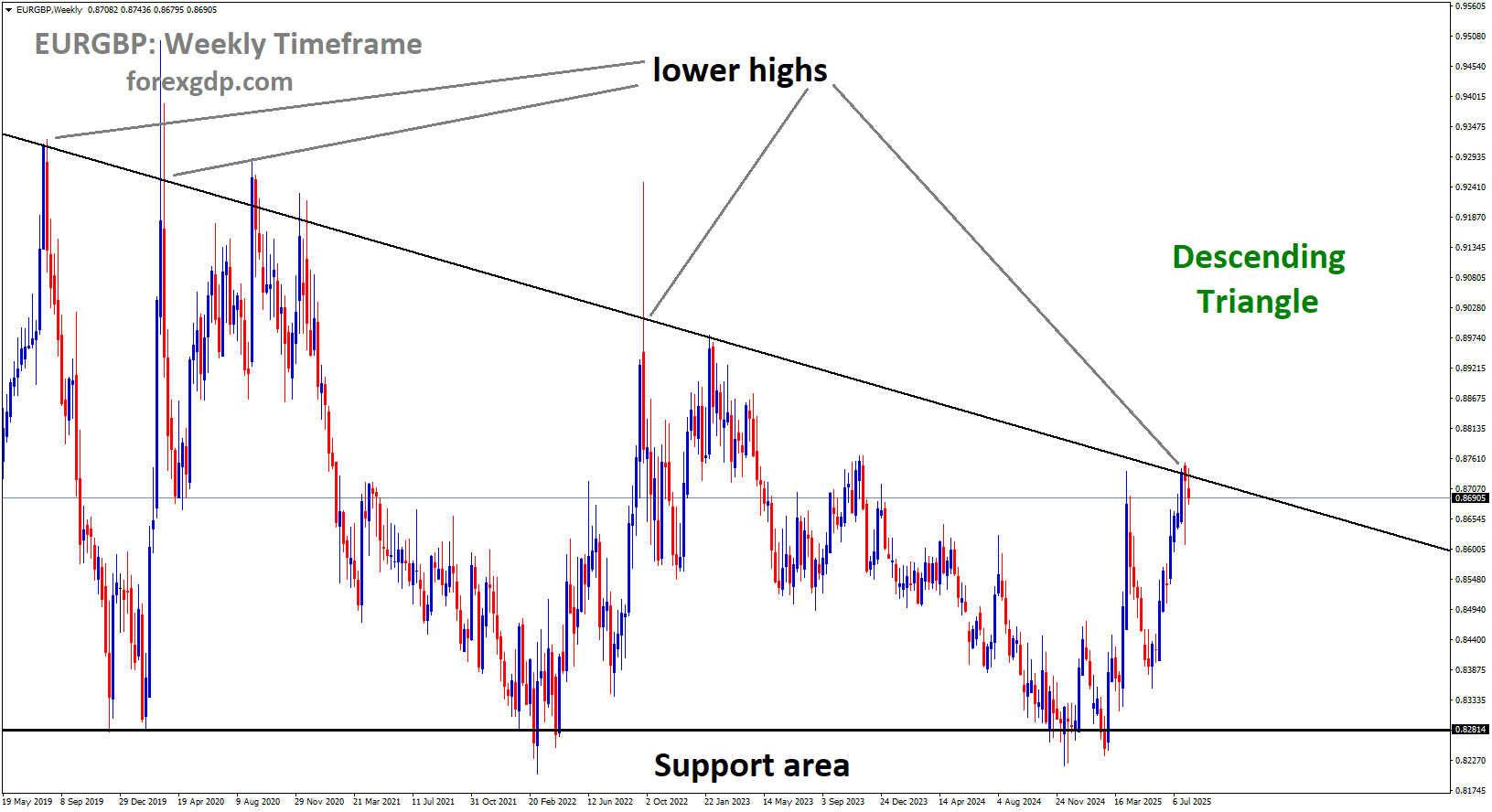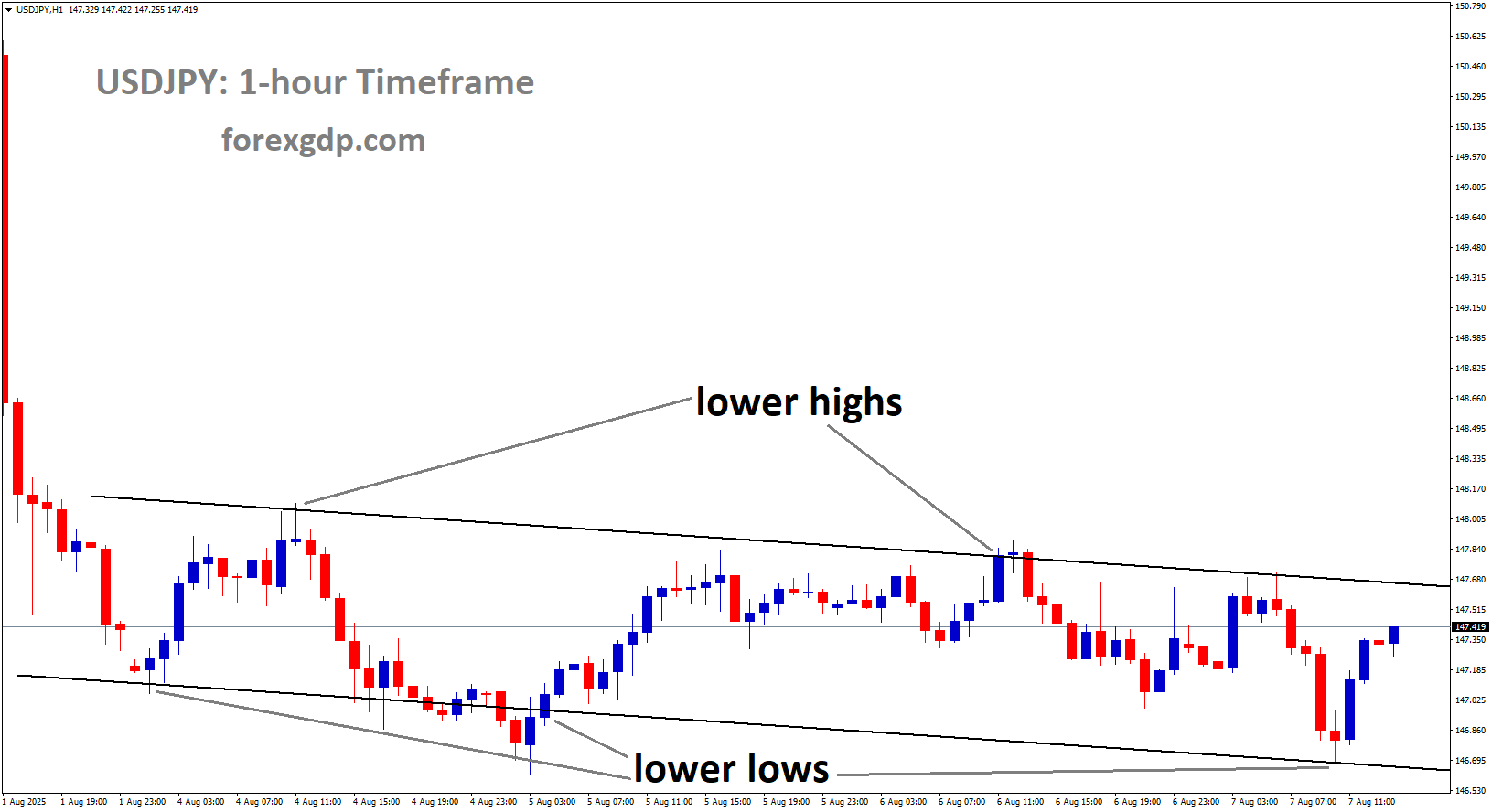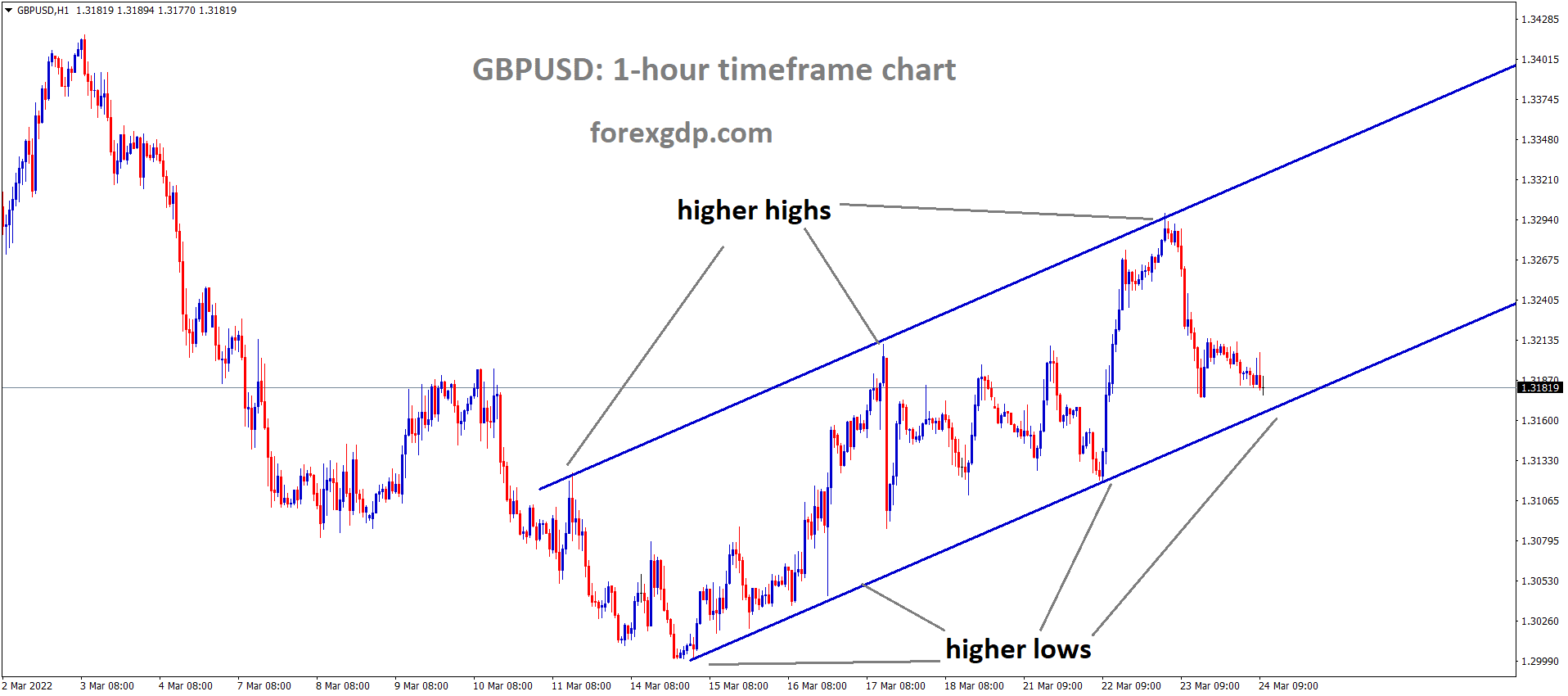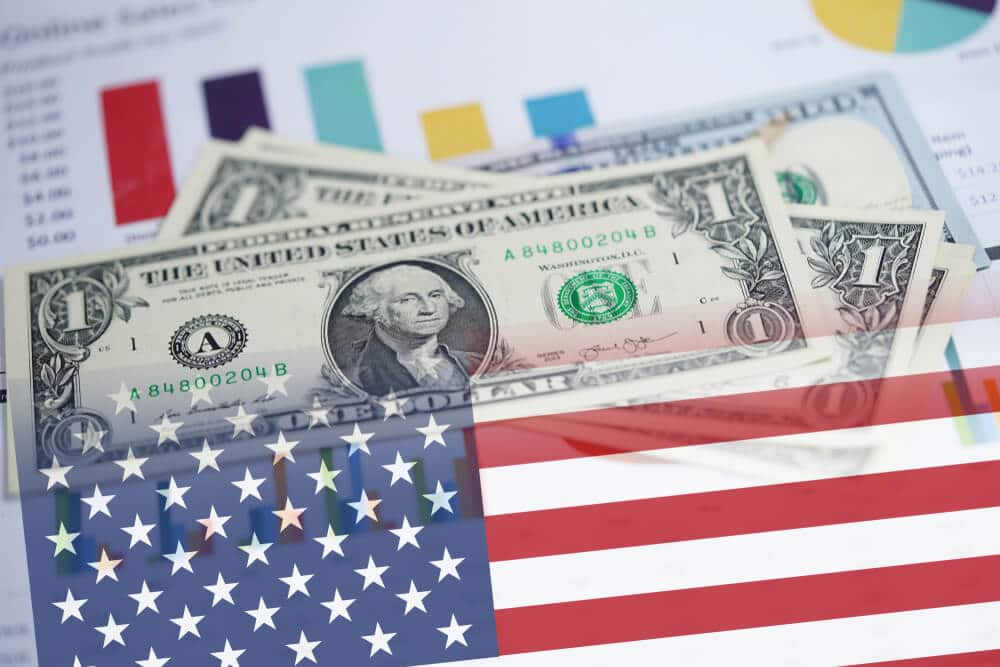EURGBP is moving in a descending triangle pattern, and the market has reached the lower high area of the pattern
EURGBP Awaits Direction Ahead of Crucial BoE Meeting
When you’re looking at what’s going on with the EUR/GBP currency pair, it’s easy to get caught up in charts and technical jargon. But let’s step away from that for a moment. Let’s break it all down in simple terms — no charts, no confusing market levels. Just a real talk about what’s moving this pair and what’s influencing it right now.
The German Economy: A Major Piece of the Puzzle
One of the big headlines right now is the drop in German industrial production. And no, you don’t have to be an economist to get why that matters.
Germany’s Output Takes a Hit
In June, Germany’s industrial production fell much more than anyone expected. We’re talking about a 1.9% drop compared to the previous month. That’s not a small blip—it’s a real sign that Europe’s largest economy is facing headwinds. On a yearly basis, the decline was even deeper.
So what does this have to do with the EUR/GBP?
Well, when Germany struggles, it pulls the whole Eurozone along with it. Investors start doubting the strength of the Euro, and they may move their money into stronger currencies like the British Pound. That weakens the Euro in comparison, which explains why the EUR/GBP is dipping.
Why Industrial Production Matters
Think of industrial production as a way to measure a country’s economic health. When factories are making less stuff, it usually means businesses aren’t investing as much and consumers aren’t spending as confidently. It’s not just about machines and materials — it’s a reflection of demand, jobs, and overall confidence.
When this data came out worse than expected, it sent a signal: the Eurozone recovery might be slower than hoped. And naturally, the Euro lost a bit of ground.
All Eyes on the Bank of England: Will They Cut Rates Again?
While the Euro faces its own challenges, things over in the UK aren’t exactly calm either. There’s one major thing everyone’s watching — the Bank of England’s (BoE) next move.
Rate Cut Expectations are Heating Up
There’s a very strong expectation in the market that the BoE will cut interest rates soon — likely at their August meeting. This wouldn’t be the first time this year, either. If they do go ahead, it would mark their third rate cut in 2025. That’s pretty significant.
But why are they doing this?
When a central bank cuts interest rates, it’s usually trying to stimulate the economy. Lower rates mean cheaper borrowing for people and businesses. The downside? Lower rates can also weaken the currency. If the BoE goes ahead with the cut, we could see the British Pound take a hit, which might help the Euro regain some strength against it.
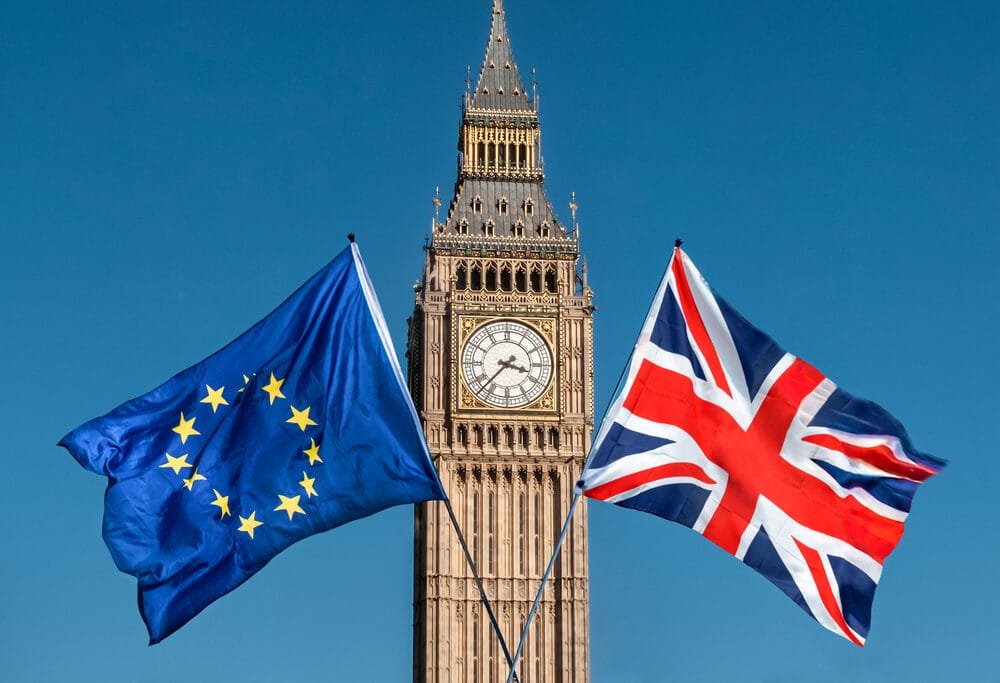
What Could Andrew Bailey Say?
Besides the actual rate cut decision, markets will be listening very closely to what BoE Governor Andrew Bailey has to say afterward. If he hints that more rate cuts are coming, or shows concern about the UK economy, it could shake things up for the Pound.
On the flip side, if he sounds more optimistic or suggests this might be the last cut for a while, it might give the Pound some extra fuel.
Big Picture: Global Trade Tensions Stirring Again
As if local economic news wasn’t enough, there’s another layer to this story — and it’s coming from across the Atlantic.
EU-US Trade Talks: Back in the Spotlight
The European Union recently paused its planned response to tariffs from the United States. That sounds diplomatic on the surface, but the talks aren’t going smoothly.
The US is pushing hard, with President Trump warning that unless certain parts of the trade agreement are followed — especially around investment pledges — the US could slap a 35% tariff on EU goods. That’s massive.
Why does this matter for the Euro?
It’s all about uncertainty. Trade wars and economic conflicts make investors nervous. If the EU ends up in a messy trade spat with the US, that uncertainty could hurt European growth and, in turn, the Euro. And if the British Pound is looking even slightly more stable at the same time, the EUR/GBP pair could keep sliding.
What Traders and Investors Are Watching Now
If you’re someone who keeps an eye on the currency market — even casually — there are a few things worth watching in the coming days:
-
Bank of England Decision: This could be the most immediate trigger for movement in the EUR/GBP pair. The tone of the statement will be just as important as the decision itself.
-
Comments from Central Bank Leaders: Any interviews, press conferences, or unexpected remarks from BoE or ECB (European Central Bank) officials can move the markets.
-
Ongoing Trade Developments: Keep an eye on the US-EU negotiations. More tension could add pressure to the Euro.
-
Fresh Economic Data from the UK or Eurozone: Even small surprises can shift market sentiment in today’s environment.
Final Summary
The EUR/GBP currency pair is currently reacting to a mix of economic signals, political developments, and central bank expectations. A weaker performance from the German economy has put pressure on the Euro, while all eyes are now on the Bank of England’s rate decision, which could tip the scales for the Pound.
Add to that the backdrop of renewed trade tensions between the US and EU, and you’ve got a situation where this currency pair could remain pretty active in the coming weeks.
For anyone watching the markets, staying tuned into these key events — and filtering out the noise — will be the best way to understand where things might go next. The key isn’t in following every tiny price movement, but in keeping track of the real-world stories that drive them.
EURUSD Rally Continues on Soften Dollar and Renewed Ukraine Optimism
In the world of currency markets, things can shift quickly. Over the past few days, the Euro has been on a steady climb, while the US Dollar seems to be losing its footing. If you’ve been wondering what’s behind this tug-of-war between two of the world’s most traded currencies, let’s break it down. We’ll go beyond the charts and technical talk and dive into the real reasons shaping this movement.
Euro’s Rise: More Than Just Market Moves
The Euro’s recent strength hasn’t just come out of nowhere. There’s been a noticeable push in its value for three straight days, and it’s catching traders’ attention.
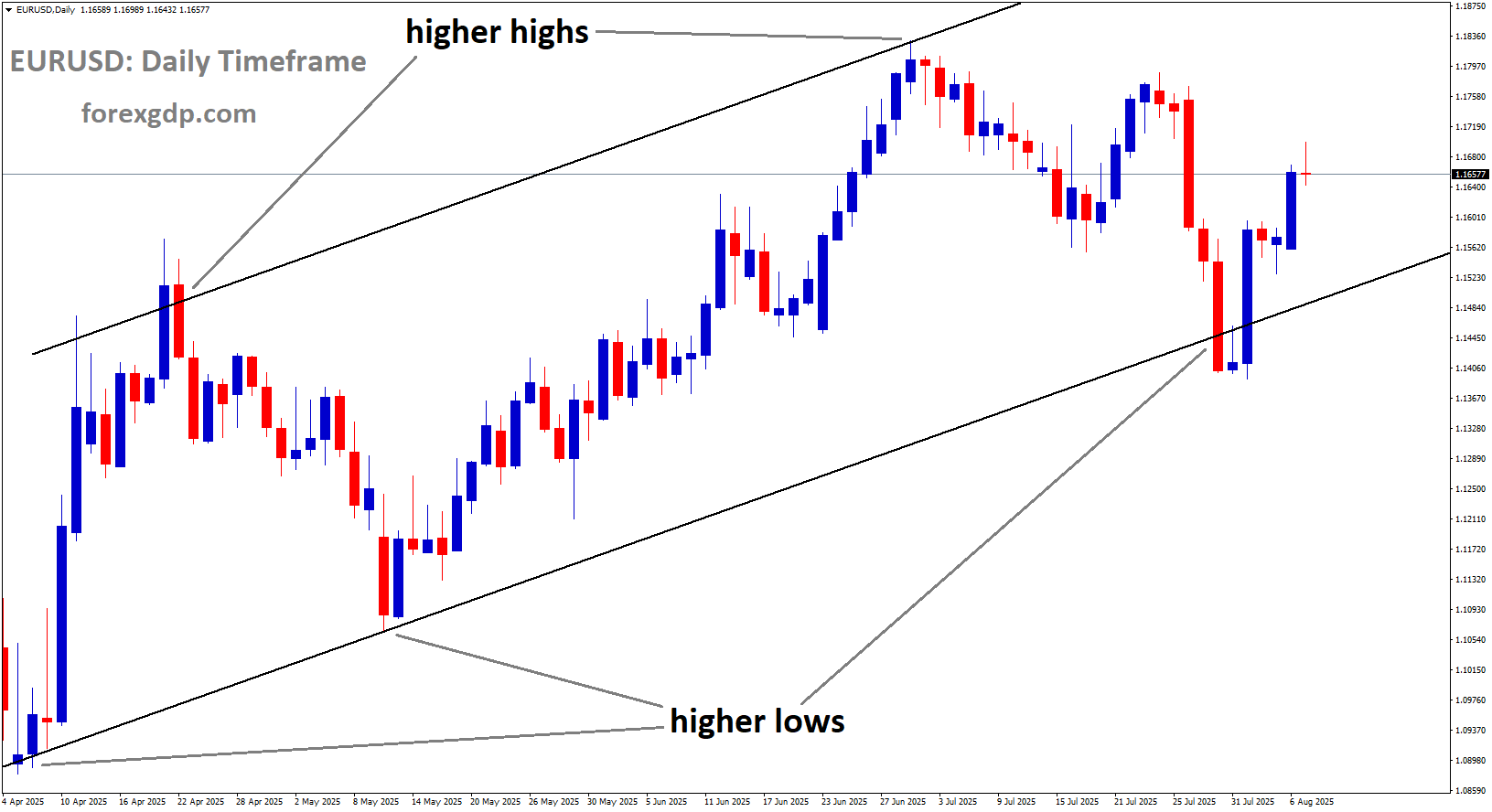
EURUSD is moving in an Ascending channel, and the market has rebounded from the higher low area of the channel
Hope on the Horizon: Ukraine Peace Talks in Focus
One major reason behind the Euro’s recent strength is the growing optimism about peace talks between Ukraine and Russia. Reports suggest there’s been a positive exchange between high-level representatives from both sides. While we’re far from any official deal, the hope alone is doing wonders for the Euro’s image.
Markets often respond to headlines and sentiment just as much as hard data. The idea that conflict might ease in Eastern Europe brings a sense of stability to the Eurozone. Investors tend to favor currencies linked to peace and political calm, and for now, that’s benefiting the Euro.
Brushing Off Weak Data
Interestingly, even though some recent data out of Germany has been disappointing, the Euro hasn’t taken a major hit. For instance, industrial production in Germany fell more than expected, and the country’s trade surplus came in weaker than forecast. Normally, that would pull the Euro down.
But this time, the bigger story—potential peace in Ukraine—is taking center stage. Sometimes, positive global developments can outweigh weak domestic numbers, and that’s what we’re seeing now. It shows how market psychology can change the weight we place on different types of information.
Why the US Dollar Is Struggling to Hold Ground
While the Euro is climbing, the US Dollar is having a tougher time. Several factors are at play here, and they’re making investors cautious about holding onto the Greenback.
Growing Talk of Fed Rate Cuts
One of the biggest reasons the Dollar is feeling pressure is the shifting expectations around interest rates. There’s increasing speculation that the Federal Reserve could start cutting interest rates sooner rather than later. Some believe cuts might even begin in the coming months.
Why does this matter? Lower interest rates generally mean a weaker Dollar. That’s because currencies with higher interest rates tend to attract more global investment. If the Fed starts easing, it reduces the appeal of holding USD, especially when other economies may keep their rates stable.
Economic Concerns Are Heating Up
Recent US economic data hasn’t painted a very encouraging picture. Job growth is slowing, and there are signs that the labor market might be losing steam. Just last week, the number of new jobs added was far below expectations. That’s raising red flags about whether the economy is starting to cool off too much.
There’s also the risk of stagflation—a situation where the economy is stagnant but inflation remains high. It’s a nasty mix, and if it takes hold, it could limit the Fed’s options and worsen the economic outlook. All of this is weighing on the Dollar.
Political Drama and Trade Tensions Add to the Pressure
On top of the economic uncertainty, there’s some political noise coming out of Washington. US President Donald Trump has been making headlines with new threats of tariffs on everything from semiconductors to oil and trade deals involving other nations.
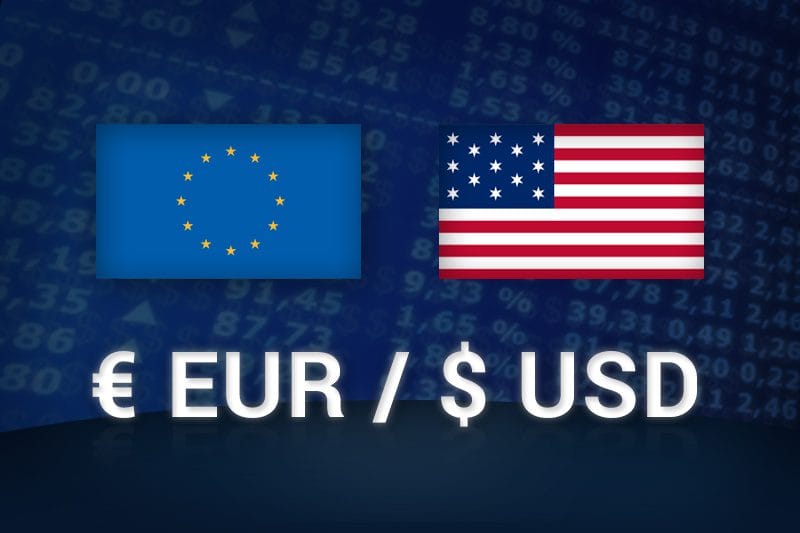
This kind of trade tension stirs up uncertainty, and markets don’t like uncertainty. Investors are unsure how these moves might affect global trade, inflation, and US economic growth. Add to that the potential appointment of new central bank officials who may not align with traditional economic policies, and it’s easy to see why the Dollar is facing resistance.
What’s Coming Up That Could Shift the Balance
If you’re watching this currency pair closely, there are a few events on the horizon that could cause another round of movement—one way or the other.
US Jobless Claims in the Spotlight
One key data point to watch is the weekly jobless claims in the US. A rising number would signal that more people are filing for unemployment benefits, which adds to the concern that the labor market is weakening. If that happens, the Dollar could slip even further.
On the flip side, a surprisingly strong reading might give the Dollar some breathing room, at least temporarily.
Central Bank Commentary
Comments from Federal Reserve officials are also worth paying attention to. Recently, some have warned about the risks of policy missteps and the negative impact of trade tariffs. These statements haven’t helped the Dollar so far, but any shift in tone or message could change how the market reacts.
Final Summary: A Tale of Two Currencies
Right now, the Euro and the US Dollar are moving in opposite directions—and not just because of economic data. The Euro is getting a lift from optimism around geopolitical developments, while the Dollar is dealing with rising fears about the economy, interest rates, and political uncertainty.
This shift highlights how currencies aren’t just influenced by numbers on a chart. They reflect the broader mood of the market, the outlook for global peace, and the direction policymakers might take next.
If you’re trading or just keeping an eye on currency trends, it’s a reminder to always look at the bigger picture. Things like peace negotiations, political decisions, and central bank moves can have just as much—if not more—impact than the latest data release. Keep watching, because this story is far from over.
GBPUSD Stays Steady with Traders Eyeing BoE Policy Shift
The Pound Sterling (GBP) is cruising on calm waters as investors and traders across the globe are glued to one key moment: the Bank of England’s upcoming decision on interest rates. Scheduled for release at 11:00 GMT, this announcement has stirred up a lot of speculation—and it’s no surprise why.
Most financial experts believe the Bank of England (BoE) is ready to lower interest rates again. If it happens, this will mark the fifth cut since August 2024. The forecasted move? A 25 basis point reduction, bringing rates down to 4%.
Why is this such a big deal?
Because rate cuts like this affect everything from mortgages to business loans to how attractive the UK is to foreign investors. And it’s not just a number—this signals how the BoE sees the current state of the UK economy. When a central bank lowers rates, it’s usually trying to encourage spending and investment by making borrowing cheaper.
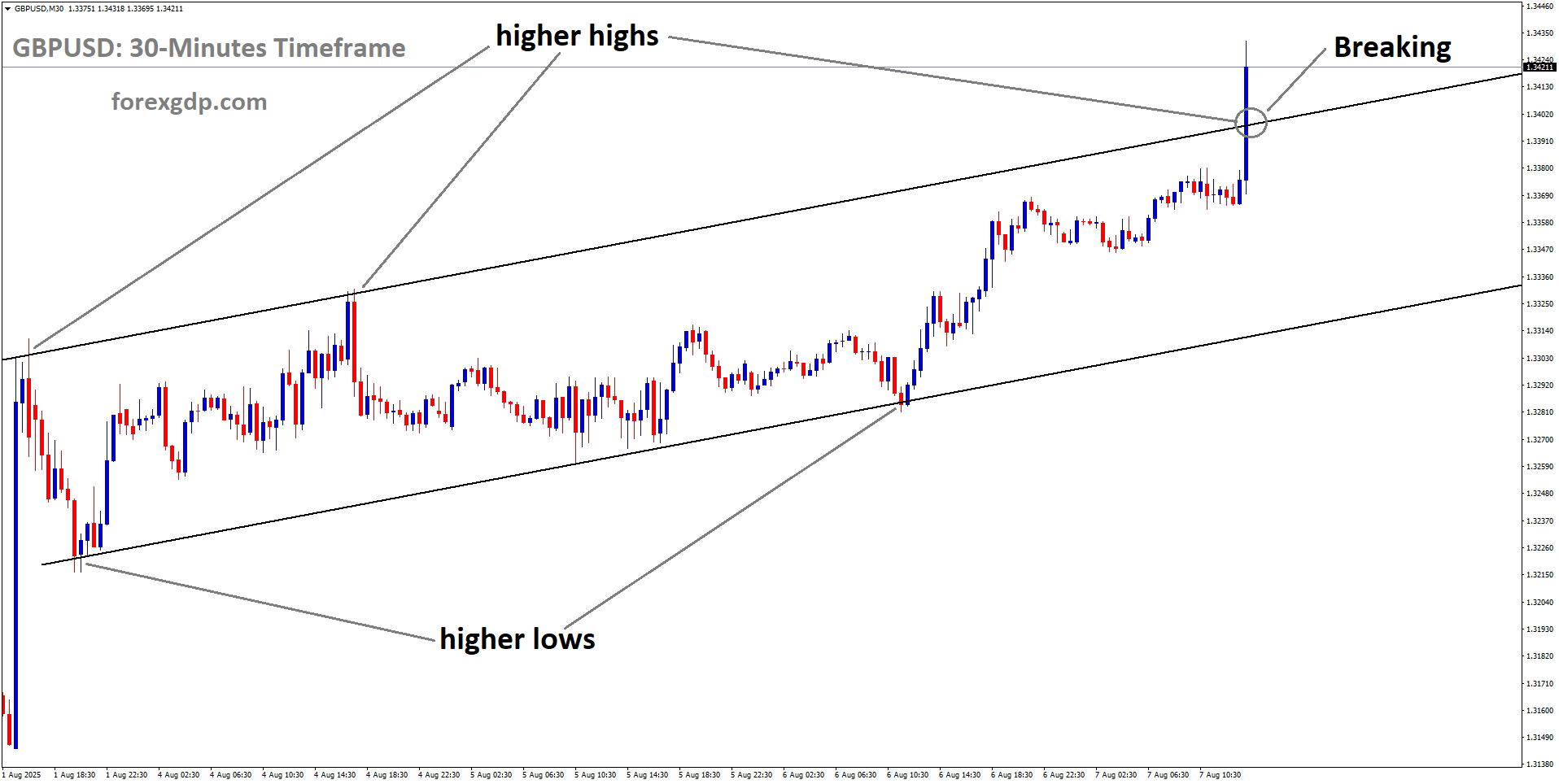
GBPUSD is breaking the higher high area of the uptrend channel
So far, the Pound isn’t swinging wildly. Instead, it’s holding steady while traders wait for clarity.
Why the BoE Might Be Ready to Cut Rates Again
There’s more to this story than just numbers. Let’s talk about the key reasons the BoE is being pushed toward another rate cut.
1. Strain in the Labour Market
Employers across the UK are feeling the pinch. A major reason is the increased financial burden due to a rise in their contributions to National Insurance. This came straight from the last Autumn Statement, where Chancellor Rachel Reeves confirmed an increase to 15%. With costs going up, many businesses have responded by reducing their workforce.
This shift isn’t just bad news for job seekers—it’s a red flag for policymakers. A weaker job market can slow economic growth, so the BoE is likely stepping in to ease pressure with a more supportive interest rate.
2. Inflation Still Hanging Around
Even with interest rates coming down multiple times in the past year, inflation hasn’t backed off as much as expected. Prices for energy and food are still higher than most households can comfortably handle. On top of that, the Labour government recently announced a boost to the welfare budget—£5.5 billion by the year 2029-30, according to the UK’s Institute for Fiscal Studies.
That’s a lot of money flowing into the economy, which could actually keep inflation from falling fast. And yet, despite these risks, the Bank of England seems ready to make borrowing cheaper. Why? Because economic slowdown and job market concerns are overshadowing the inflation worries—for now.
3. “Gradual and Careful” – BoE’s Ongoing Strategy
Governor Andrew Bailey has made it clear in the past: any changes in policy will be approached with caution. Investors are going to watch every word he says in the press conference after the announcement. Will the BoE continue cutting rates slowly? Or will they pause after this round and wait for more data?
Economists from Pantheon Macroeconomics believe that this could be a “one-and-done” move. Their logic? Inflation might remain above the BoE’s 2% target for the next couple of years, so the central bank might not have too many rate cuts left in the tank.
Meanwhile, Across the Pond: The Fed Has Its Own Problems
It’s not just the UK making headlines—central bankers in the United States are also in focus. Several Federal Reserve officials are now openly supporting interest rate cuts, and it’s mostly due to concerns about the US job market slowing down.
Just this week, top Fed voices like Neel Kashkari, Mary Daly, and Lisa Cook all hinted that rate cuts may be necessary soon.

Kashkari even mentioned that the Fed should respond to signs of a cooling economy and that two rate cuts in 2025 seem “appropriate.” His comments came after US jobs data disappointed in a big way, with July’s numbers falling short and previous months being revised down.
What does this mean for the Pound?
The Pound Sterling often gains strength when the US Dollar weakens, and that’s exactly what’s happening now. The US Dollar Index (which measures the dollar against other major currencies) is still under pressure. As a result, the GBP/USD exchange rate has seen modest gains, riding on the back of the Greenback’s struggles rather than UK strength alone.
What Traders and Investors Are Watching For Next
So what’s next on the radar?
All eyes are on two things:
-
The Bank of England’s policy statement
-
Governor Andrew Bailey’s press conference
Traders want to hear if more rate cuts are coming or if this is the final move for a while. The tone of the statement—whether it’s cautious or confident—will shape how markets react in the coming weeks.
At the same time, any further signs of weakness from the US economy could push the dollar lower, giving the Pound more room to climb, even if the BoE cuts rates. It’s a classic case of relative strength between two currencies.
Summary: A Delicate Balancing Act for the UK
Right now, the Pound is caught in a moment of quiet before a potential shake-up. The Bank of England is expected to lower rates again, aiming to support an economy that’s struggling with rising costs, a cooling job market, and persistent inflation.
But the path ahead isn’t straightforward. With inflation still high and government spending set to increase, the BoE will need to move cautiously. Meanwhile, developments in the US are giving the Pound a slight edge—but that could change quickly depending on what happens next with the Fed.
For now, all we can do is wait and see what kind of message the Bank of England sends out. And when it does, expect the calm waters around the Pound to ripple—possibly in a big way.
USDJPY Dips Again: Yen Pushes Higher on Renewed Safe-Haven Demand
When it comes to global currencies, the Japanese Yen (JPY) often pops up in headlines—especially when the financial world gets a little shaky. Right now, the Yen is catching a lot of attention, and it’s not by accident. From geopolitical drama to economic shifts in the U.S. and Japan, there’s a lot happening under the surface. Let’s unpack this in a way that actually makes sense—no complicated charts, no market jargon—just the facts.
The Yen’s Sudden Popularity: What’s Fueling the Buzz?
The Japanese Yen is often seen as a “safe haven” currency. When global markets get nervous, traders and investors typically run to it. And recently, they’ve been running fast.
USDJPY is moving in a descending channel, and the market has rebounded from the lower low area of the channel
Trade Tensions with the U.S. Are Back (Again)
So, what’s sparking all this movement? A lot of it comes down to fresh trade tension between the United States and Japan. Reports suggest that the U.S. might slap a new 15% tariff on all imports from Japan. That’s a big deal.
Now, this isn’t the first time we’ve seen trade threats between the U.S. and its allies, but this time it’s triggering real concern. Tariffs can mess with global supply chains, raise prices, and slow down economies. Whenever these kinds of fears surface, people tend to pull their money from riskier investments and stash it somewhere “safer.” That’s where the Yen comes in.
How Central Banks Are Playing Their Cards
It’s not just global politics pushing the Yen around. Decisions from the big players in the financial world—the central banks—are also having a huge impact.
The Bank of Japan Is Dropping Hints
For years, Japan has kept its interest rates very low. But things might be changing. The Bank of Japan (BoJ) has been sending signals that it might finally raise rates if inflation and growth numbers keep improving. That kind of talk usually makes a currency stronger, and it’s definitely giving Yen buyers more confidence right now.
The U.S. Federal Reserve Is Going the Other Way
While Japan is thinking about raising rates, the U.S. Federal Reserve (the Fed) is leaning toward cutting them. Why? Because recent U.S. economic reports haven’t looked so great. Job growth is slowing, and key sectors like services are showing signs of weakness.
That’s led to growing expectations that the Fed will cut interest rates in September, maybe even more than once by the end of the year. Lower interest rates usually mean a weaker U.S. Dollar—and when the Dollar falls, the Yen tends to rise in comparison.
Why the Market Isn’t Fully Buying Into the Yen Yet
Even though the Yen has gained some momentum, it’s not all smooth sailing from here. There are a few reasons why some traders are still being cautious.
Mixed Messages from Japan
While the BoJ has talked about possible rate hikes, it hasn’t committed to anything specific. There’s also uncertainty in Japan’s domestic politics after recent election losses by the ruling party. That’s led to more questions about government spending, tax cuts, and whether Japan can maintain fiscal stability.
On top of that, new data shows that real wages in Japan have been falling for several months. When people earn less, they tend to spend less, which could slow down economic recovery. That makes it harder for the BoJ to justify hiking rates anytime soon.
Strong Stock Market Keeps Risk Appetite Alive
Even with all the doom and gloom, stock markets are doing surprisingly well. When markets are optimistic, people are more willing to invest in riskier assets instead of safe-havens like the Yen. This “risk-on” mood can sometimes cap how much the Yen can rise.
What to Watch Next: Big Events on the Horizon
If you’re keeping an eye on how the Yen and Dollar are behaving, there are a few key events coming up that could shake things up even more.

U.S. Jobless Claims and Fed Speeches
Traders are closely watching the weekly U.S. jobless claims. If more people are filing for unemployment, that’s another red flag for the U.S. economy—and more reason for the Fed to cut rates.
Also, speeches from members of the Federal Reserve can offer clues about future policy. These are the moments where even a single sentence can spark major moves in the market.
Ongoing Trade Developments
Don’t forget about trade headlines. If the U.S. actually goes through with the proposed tariffs on Japanese imports, that could lead to a full-blown trade battle. And guess what? That usually sends investors straight to the safety of the Yen.
Final Summary: The Bigger Picture for the Yen and What It Means for You
Right now, the Japanese Yen is riding a wave of renewed attention. Trade tensions between the U.S. and Japan, along with shifting interest rate policies from both countries’ central banks, are pushing the Yen higher against the Dollar.
But this isn’t a one-way street. The Yen’s rise could slow down if Japan delays its own rate hikes or if global stock markets stay strong. And on the flip side, if the U.S. economy continues to struggle and the Fed cuts rates more aggressively, the Dollar could weaken further, giving the Yen more room to shine.
So, if you’re watching the currency market—or even just trying to understand what all the fuss is about—the Japanese Yen is definitely one to keep an eye on. Its movement tells a story of global uncertainty, cautious optimism, and a market that’s constantly shifting with every new headline.
In the end, the Yen’s strength isn’t just about Japan—it’s about how the world is feeling. And right now, the world is nervous.
USDCAD Extends Decline with Markets Awaiting US Labor Data
If you’ve been watching the forex market lately, you might have noticed something interesting—USD/CAD has been slipping for several days in a row. It’s not a random move. In fact, there are several factors at play, and they all come together to tell a bigger story about what’s happening in both the U.S. and Canadian economies right now.
Let’s break it down in simple terms and see why this currency pair is under pressure—and what could come next.
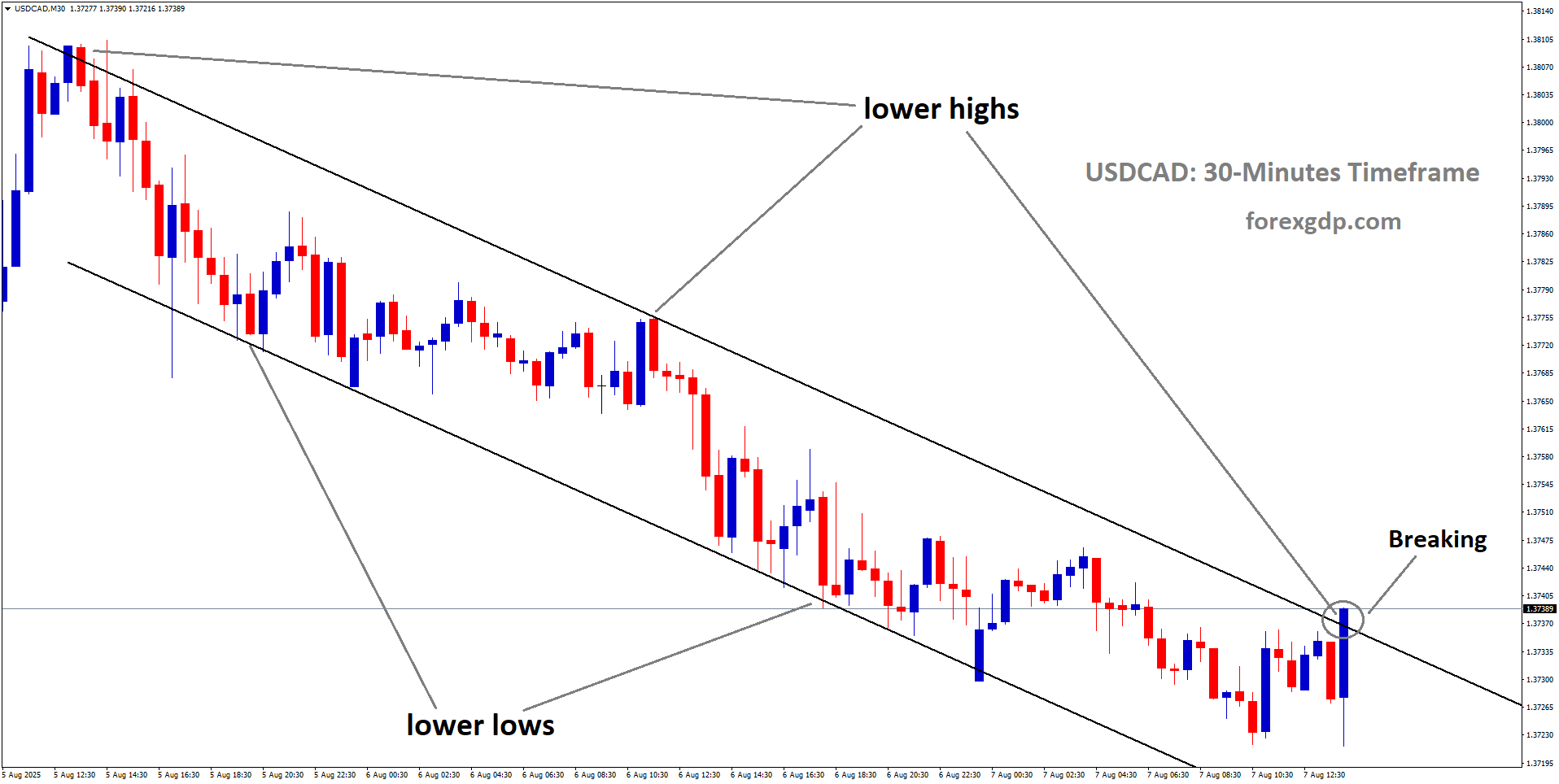
USDCAD is breaking the lower high area of the downtrend channel
The U.S. Dollar’s Struggles: What’s Causing the Weakness?
The U.S. Dollar, which is normally seen as a strong and stable currency, has been facing some challenges lately. It’s not about market prices or technical signals—it’s deeper than that.
Shifting Expectations from the Fed
One of the big reasons behind the dollar’s recent drop is changing expectations about interest rates. Some top officials at the Federal Reserve (America’s central bank) are starting to signal that it might be time to adjust their approach. Why? Because the job market in the U.S. is showing signs of slowing down.
Job data has been weaker than expected, and that’s making investors think the Fed might cut interest rates sooner than expected. When rate cuts are on the table, it usually makes the dollar less attractive to investors, and that’s exactly what we’re seeing.
Fed Voices Adding to the Caution
Several well-known voices from the Federal Reserve have echoed this cautious tone. Leaders like Neel Kashkari, Mary Daly, and Lisa Cook have all pointed out growing concerns in the job market. These aren’t just off-the-cuff remarks—they’re signals to the market that changes in monetary policy could be on the horizon.
That kind of talk tends to send ripples through the currency markets. Traders hear that and start adjusting their strategies, often moving away from the dollar and looking for safer or more rewarding opportunities elsewhere.
What’s Happening in Canada? All Eyes on Economic Data
While the U.S. dollar has been losing ground, Canada’s side of the equation adds more complexity. The Canadian dollar isn’t exactly soaring on its own, but it’s benefiting from some cautious optimism.
Key Data Releases on the Horizon
One of the major events that traders are watching is Canada’s Ivey Purchasing Managers Index (PMI), which gives a snapshot of how the economy is performing from the perspective of business managers. This data can influence market expectations about how the Bank of Canada might act in the future.
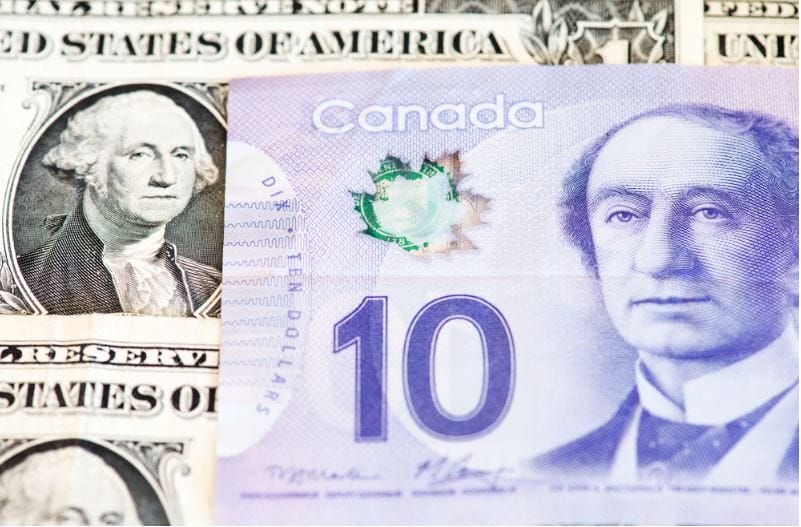
If the PMI shows signs of strength, that could support the Canadian dollar further. On the flip side, weaker numbers might add pressure—but for now, there’s enough curiosity in the market to keep traders on their toes.
Canadian Jobs Report in Focus
Looking ahead, the bigger spotlight is on the upcoming Canadian jobs data. Scheduled for release soon, this report could be a major market mover. If it shows that Canada’s job market is holding up well—or even improving—that could give the Canadian dollar more momentum.
But if the report signals that the labor market is cooling down, there’s a chance that traders will expect the Bank of Canada to cut interest rates in the near future, just like the Fed might.
Political Noise Adds a Twist
As if economic data wasn’t enough, politics has found its way into the USD/CAD story too.
U.S. Leadership Decisions in the Spotlight
U.S. President Donald Trump has stirred things up by hinting at new appointments for key roles in the Federal Reserve. Names like Kevin Hassett and Kevin Warsh have been mentioned as potential candidates for the top job at the Fed, and while these names might not mean much to the average person, they matter a lot in financial circles.
Any change in leadership at the Fed could mean changes in policy direction. That uncertainty can create tension in the markets, especially when paired with economic concerns. So even though these are just talks for now, the speculation alone has been enough to make investors cautious.
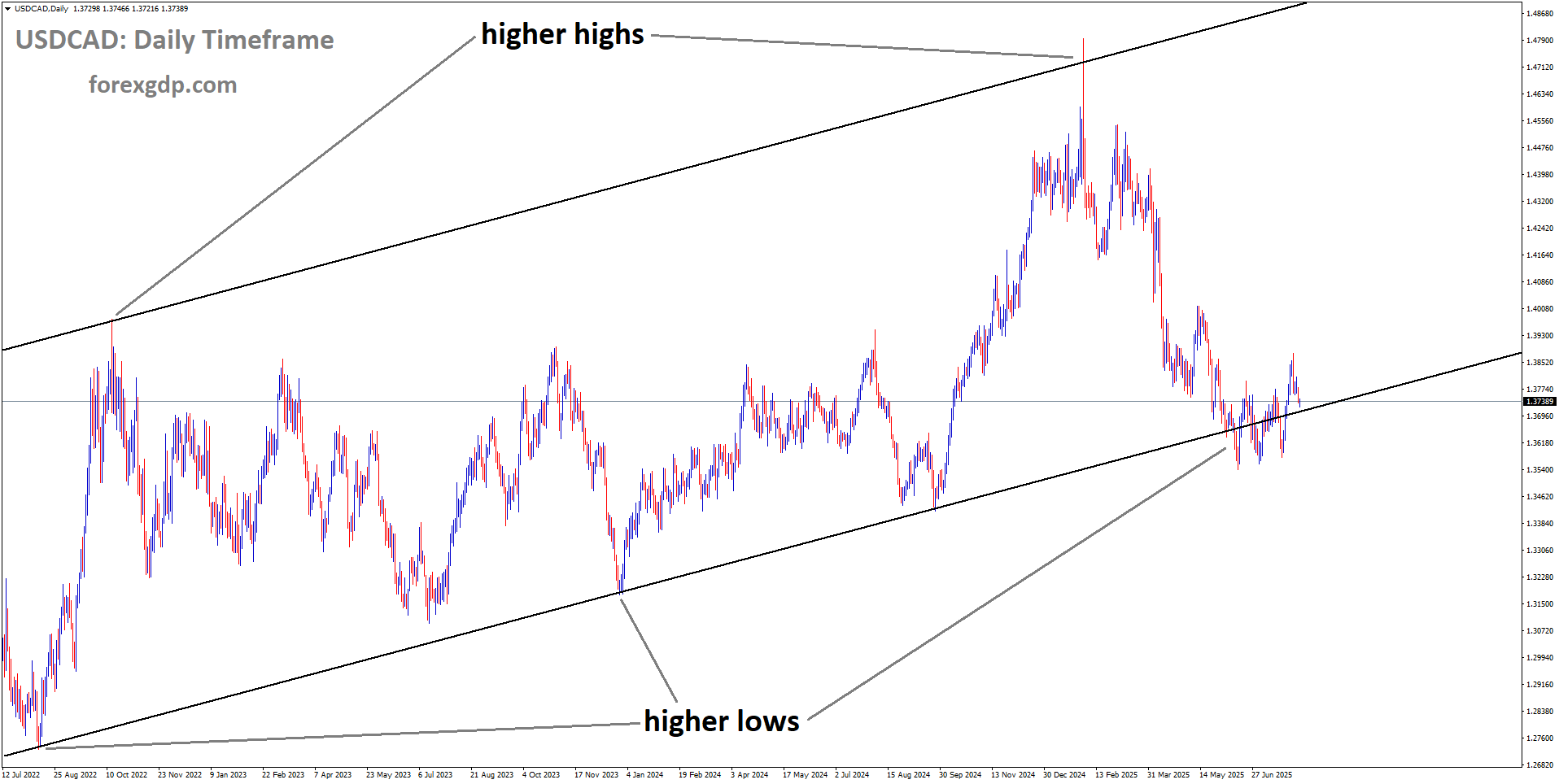
USDCAD is moving in an uptrend channel, and the market has reached a higher low area of the channel
What Does It All Mean for USD/CAD?
So, when you put all these pieces together, what’s really going on?
-
The U.S. dollar is under pressure because interest rate cuts seem more likely now.
-
The Canadian economy isn’t perfect, but with key data pending, there’s hope that it might hold steady for now.
-
Political developments in the U.S. are adding another layer of uncertainty, making traders think twice before betting on the dollar.
This mix of caution, shifting expectations, and upcoming data has caused USD/CAD to drop for several days in a row. It’s not about one big event—it’s a combination of subtle shifts in sentiment and anticipation for what’s next.
Final Summary: Watching, Waiting, and Reacting
The recent weakness in the USD/CAD pair isn’t just a random move—it’s rooted in real economic and political developments. With U.S. jobs data looking soft and Federal Reserve officials starting to voice concerns, the market is slowly leaning toward the idea that rate cuts are coming.
At the same time, Canada’s economy is under the microscope too, with traders waiting to see if the upcoming job report confirms stability or hints at weakness. Add in some political buzz from Washington, and you’ve got a market that’s cautious and reactive.
For traders and investors, the next few days could be crucial. Will Canada’s labor data boost confidence in the loonie? Will the Fed shift gears more dramatically? While nobody can predict the future, one thing’s clear—there’s a lot to watch, and the USD/CAD story is far from over.
NZD/USD Climbs Higher Fueled by China’s Export Boom and Investor Optimism
The New Zealand Dollar (often called the Kiwi) has been making some interesting moves lately, and it’s got traders and economists buzzing. If you’re wondering why it’s gaining strength, what’s pushing it forward, and what might be next, you’re in the right place. Let’s break it all down in a way that’s clear, easy to understand, and relevant to today’s global economic picture.

NZDUSD is moving in an uptrend channel, and the market has fallen from the higher high area of the channel
Kiwi on the Rise: What’s Fueling the Momentum?
The New Zealand Dollar has been climbing for a second straight day, and there are a few strong reasons behind it. One of the biggest driving forces is China — specifically, a recent batch of promising data coming out of the country. Since China is New Zealand’s largest trading partner, anything positive from their end tends to shine a light on the Kiwi too.
China’s Export Power Is Rebounding
China recently shared its latest trade figures, and let’s just say, they turned some heads. Exports out of China jumped higher than expected, which is a clear sign that global demand for Chinese goods is alive and well. While that’s good news on its own, what really caught attention was the increase in Chinese imports. This suggests that domestic demand within China is also picking up pace — and that’s a big deal for countries like New Zealand that rely heavily on exporting goods to China.
When China buys more, it often includes products like dairy, meat, and wood from New Zealand. So, more Chinese demand often translates to more business for Kiwi exporters. Naturally, this supports the New Zealand Dollar.
Easing Inflation in New Zealand: A Welcome Break
Another reason the Kiwi is gaining strength is tied to inflation — or more specifically, the easing of it.
What’s Happening with Inflation in NZ?
The Reserve Bank of New Zealand (RBNZ) regularly checks in on inflation expectations — basically, what businesses and consumers think prices will do over the next few months. Recent reports show that expectations are dropping. That means people believe prices won’t rise as quickly, and this is typically seen as a green light for the central bank to take a step back from aggressive interest rate hikes.
Why does this matter? When inflation is high, central banks often raise interest rates to slow things down. But higher interest rates can put pressure on an economy. So, when inflation cools, the RBNZ has room to ease up. This potential for future rate cuts has created a more relaxed environment, which is encouraging for investors. A calm outlook often helps boost a currency’s appeal — and that’s what we’re seeing with the Kiwi right now.
The Weakened US Dollar: An Extra Boost for the Kiwi
Another key factor in the Kiwi’s rise? The US Dollar isn’t exactly in fighting form right now.
What’s Dragging the USD Down?
A few things are weighing on the greenback. Most importantly, the recent US employment data didn’t meet expectations. The job market, which has been strong for a while, is now showing signs of cooling. Fewer jobs and slower hiring make the US economy look a bit less robust, and that often causes the Dollar to slip.
Investors are now thinking that the Federal Reserve (America’s central bank) might soon have to cut interest rates — or at least hold off on raising them further. And when the Fed gets dovish, the Dollar tends to slide. That’s great news for other currencies — like the New Zealand Dollar — because they become more attractive by comparison.

So, as the USD steps back, the Kiwi takes a step forward.
Why Everyone’s Watching US Jobless Claims Today
Now, here’s where things could get interesting. A lot of attention is turning toward the US weekly jobless claims report. This report tells us how many people are filing for unemployment benefits each week. It’s not the flashiest piece of data, but it’s incredibly useful for seeing how the job market is doing in real time.
If the number of jobless claims is higher than expected, it would be another sign that the US job market is softening. And if that happens, investors will likely become even more confident that the Fed will lean toward lowering interest rates soon. That would apply more downward pressure on the US Dollar and potentially give the Kiwi even more room to rise.
In short, a weak jobless claims report today could mean more momentum for the New Zealand Dollar.
Final Summary: The Big Picture for the Kiwi
The New Zealand Dollar is riding a wave of positive momentum thanks to three key factors:
-
Stronger trade data from China, signaling growing demand for New Zealand’s exports.
-
Lower inflation expectations at home, giving the RBNZ room to ease policy without panicking the market.
-
A softer US Dollar, driven by underwhelming job market data and rising expectations of Fed rate cuts.
On top of that, today’s US jobless claims report could add even more fuel to the fire, depending on what the numbers show.
While currencies move for many reasons — and often unpredictably — the current setup is clearly in the Kiwi’s favor. For traders, businesses, or anyone keeping an eye on the New Zealand Dollar, now’s a good time to stay alert. A lot’s happening, and the ripple effects could extend far beyond just a couple of days.
If you’re into currency trends or want to understand what drives these global shifts, following stories like this gives you a great window into how economics, politics, and investor behavior all collide. And for the Kiwi? The winds are blowing in a favorable direction — at least for now.

